
Photography by Nick Sethi for PIN–UP 36.
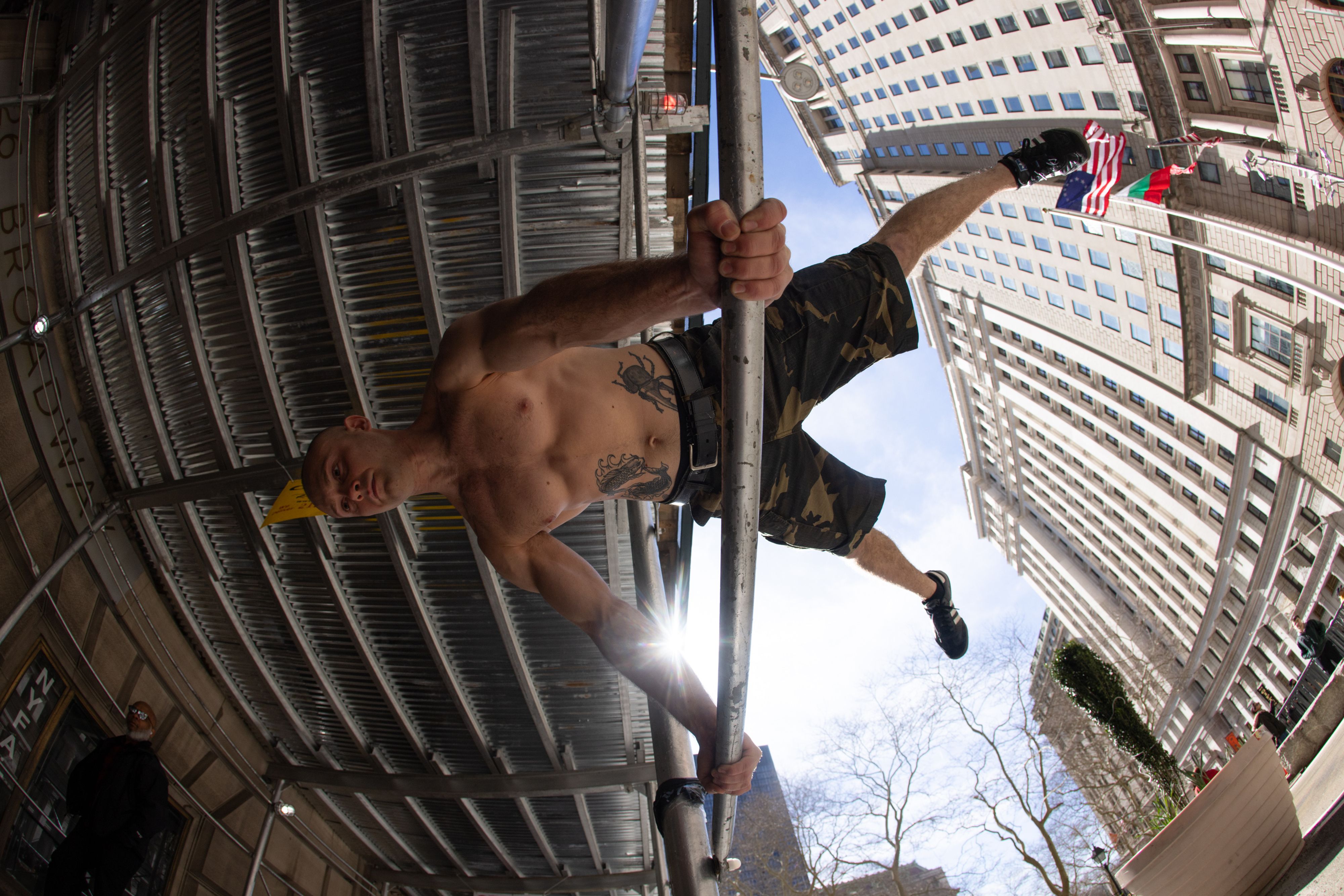
Max Geyler doing a calisthenics routine on New York City scaffolding. Photography by Nick Sethi for PIN–UP 36.
The New York City skyline is likely the most recognizable in the world, with buildings so tall tourists can easily be spotted craning their necks, heads thrown back, eyes squinting. At ground level, however, the city is often wrapped in a camouflage of steel and wooden planks painted in a standardized hunter green — a color mandated by Local Law 47 (2013) in an effort to “create visual consistency” with a hue officially deemed “soothing.”
Construction sheds, more commonly referred to as scaffolding, have become such a permanent fixture in the New York landscape — there is about one million feet of construction scaffolding in the city at any given time — that buildings almost look out of place without them. It’s become the city’s armor, a sprawling network of overhead protection that is as anonymous as it is familiar. Scaffolding conceals some of the city’s most precious landmarks and buildings, turning them into eyesores for months, if not years. (There are an average of 9,000 active construction sites in New York City at any given time.)
These structures had become the subject of so much debate that in 2009, former Mayor Michael Bloomberg held a competition to create a more appealing design. The winning alternative, dubbed the Urban Umbrella, promised a less-unsightly solution to traditional sidewalk scaffolding and overhead protection, rendered in a gentrification-friendly hue of white with vaguely gothic roof arches (its designer, Young-Hwan Choi, referred to them as “flowers”). A more recent initiative by Mayor Eric Adams, City Canvas, seeks the help of local artists “to transform prominent urban spaces.”

Photography by Nick Sethi for PIN–UP 36.

Photography by Nick Sethi for PIN–UP 36.
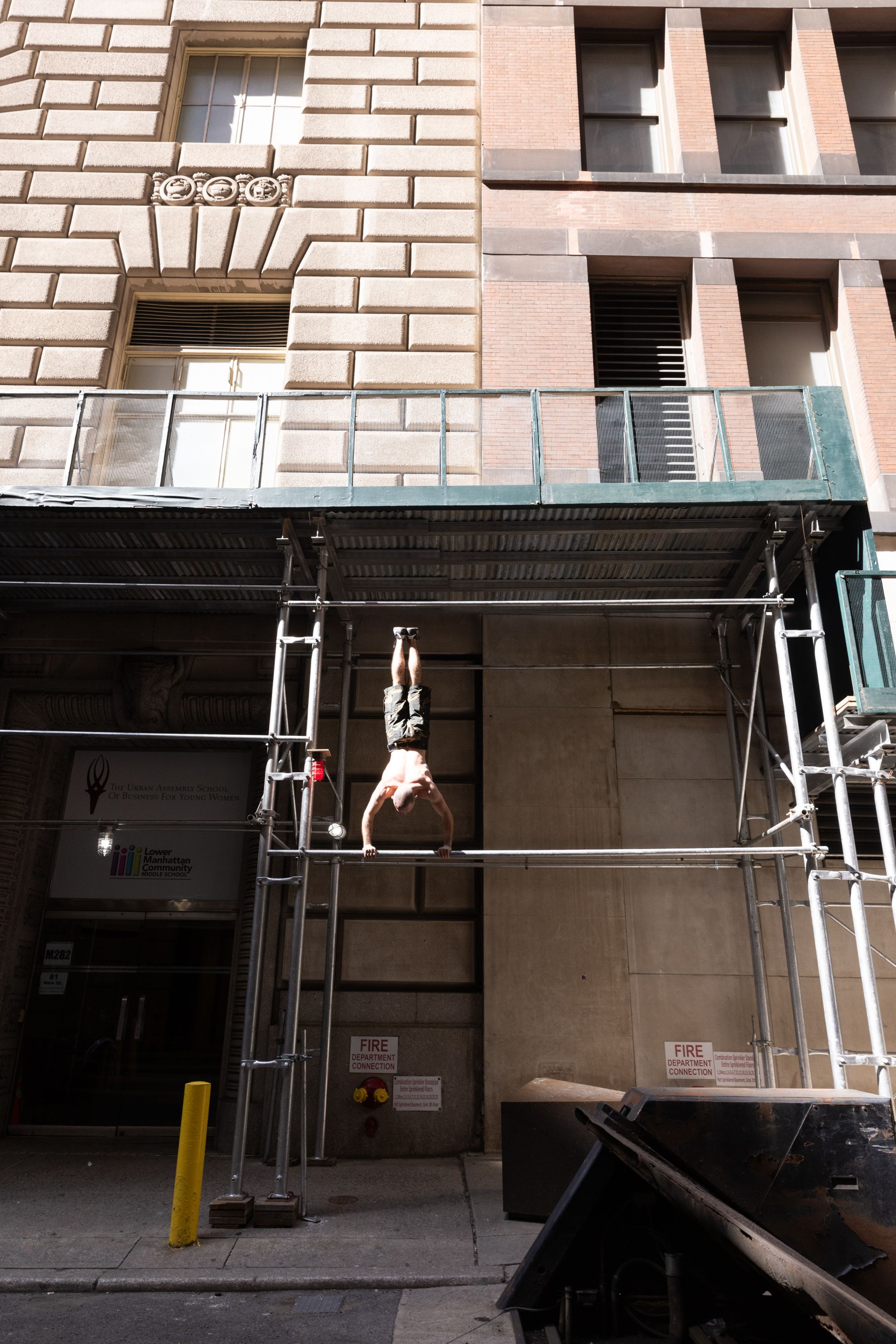
Photography by Nick Sethi for PIN–UP 36.

Hello Max aka @maxefrt! Born in Bensonhurst, Brooklyn, the 27-year-old vegan and former union plumber has roots in breakdancing and occasionally moonlights as a graffiti artist. But his true passion is body manipulation and acrobatics. An autodidact through and through, Max has perfected his craft for over a decade and now offers classes in calisthenics and bodyweight exercises. Check out his sometimes-risky gymnastic showmanship on Instagram or book your own session at maxefrt.com

Photography by Nick Sethi for PIN–UP 36.
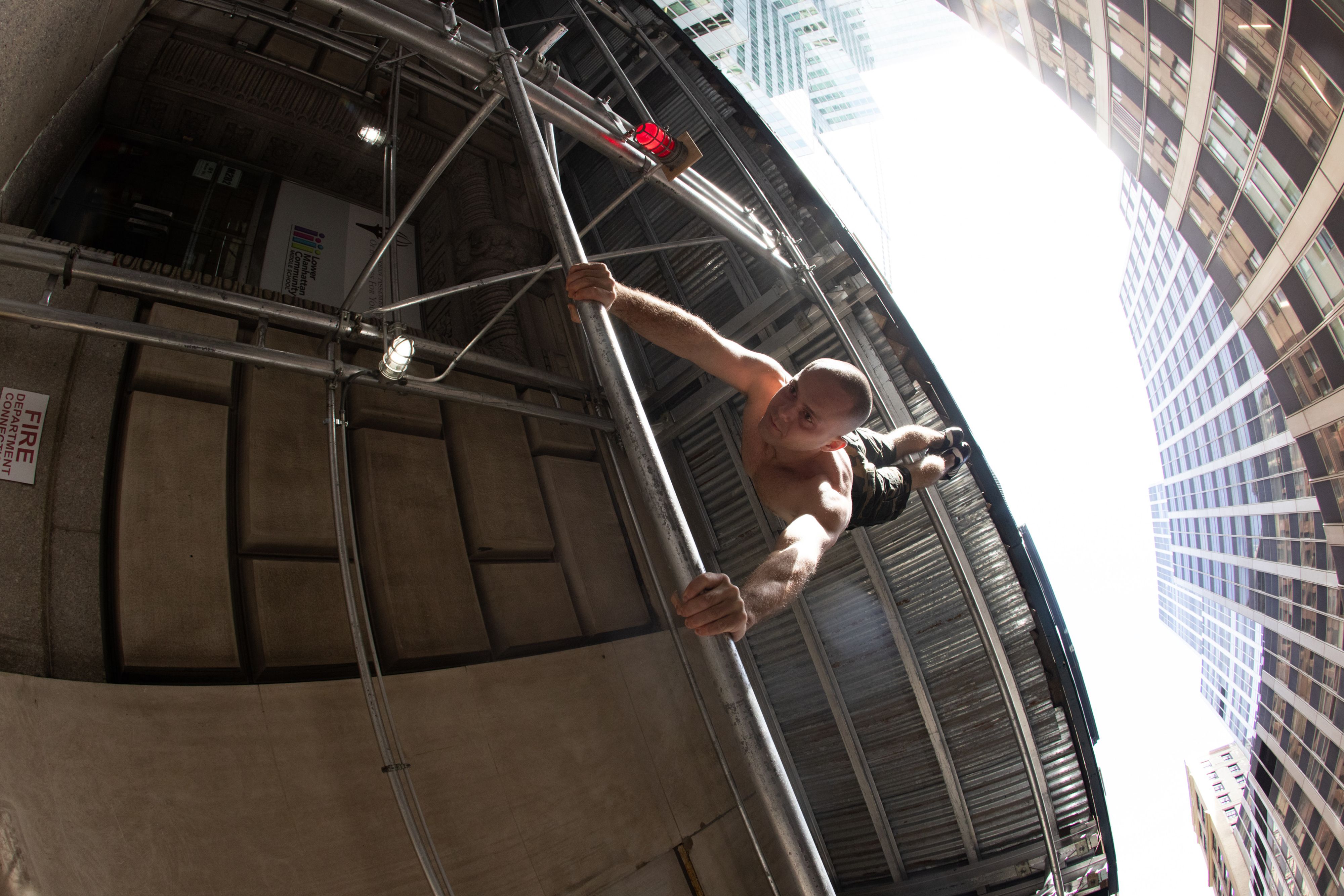
Photography by Nick Sethi for PIN–UP.
Despite these efforts, however, in most of the city, the old steel and hunter-green-painted wood remain, as does the question of what it’s all for. The answer is layered in money, politics, and public safety. In 1998, the city instituted Local Law 11, also known as the Façade Protection and Safety Program (or simply FISP), requiring any building over six stories to have its façade inspected every five years. The law is as much a safety measure as it is a codification of the sidewalk-shed rental industry, which in New York alone, has grown into an 8-billion-dollar economy and shows no sign of letting up anytime soon. So, as with everything else in the city, New Yorkers adapt and make use.
Enter Max, who uses scaffolding like his own outdoor jungle gym, completing acrobatic routines seamlessly on the city’s steel cages. Unlike its biggest critics, Max is less concerned with scaffolding’s lack of aesthetic appeal. The former graffiti writer, trainer, and calisthenics athlete from Brooklyn sees the structures as a kind of physical challenge. Under the watchful lens of photographer Nick Sethi, Max showed off his impressive talent — handstand push-ups, over-and-under pull-ups, muscle-ups, planches, levers, flagpoles, and more — transforming the various construction sites around Wall Street into the substratum of a pedestrian adventure.
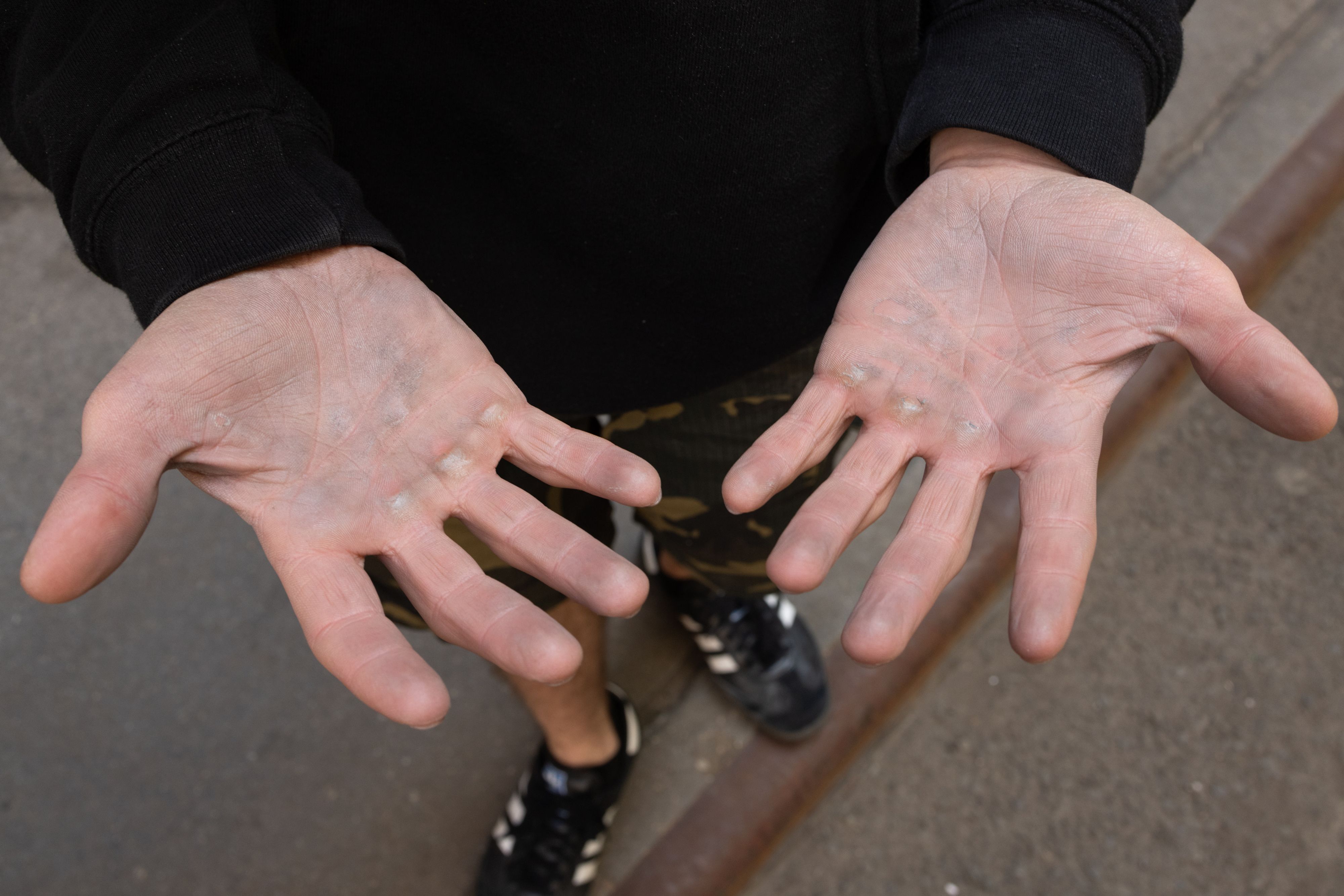
Photography by Nick Sethi for PIN–UP 36.
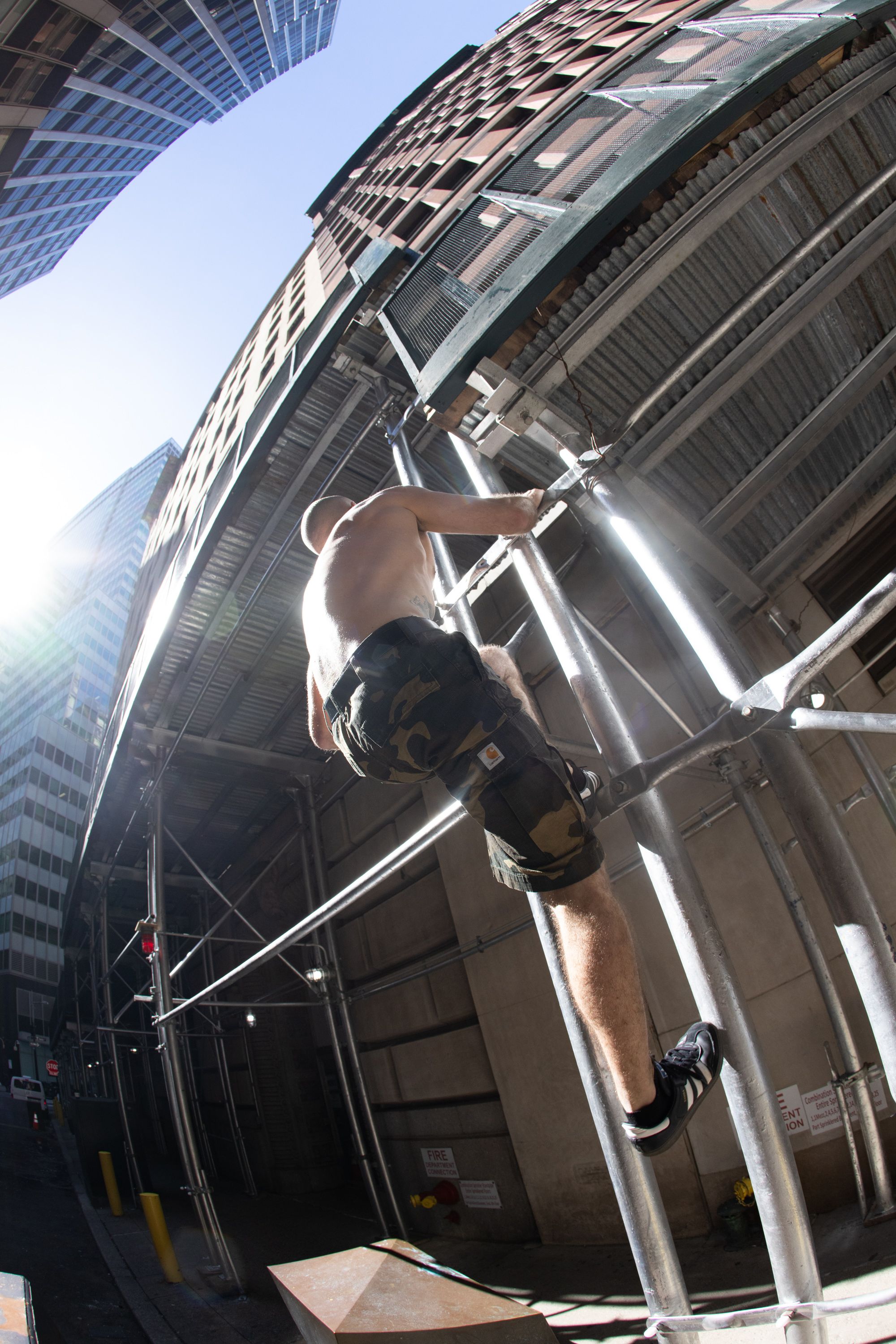
Photography by Nick Sethi for PIN–UP 36.
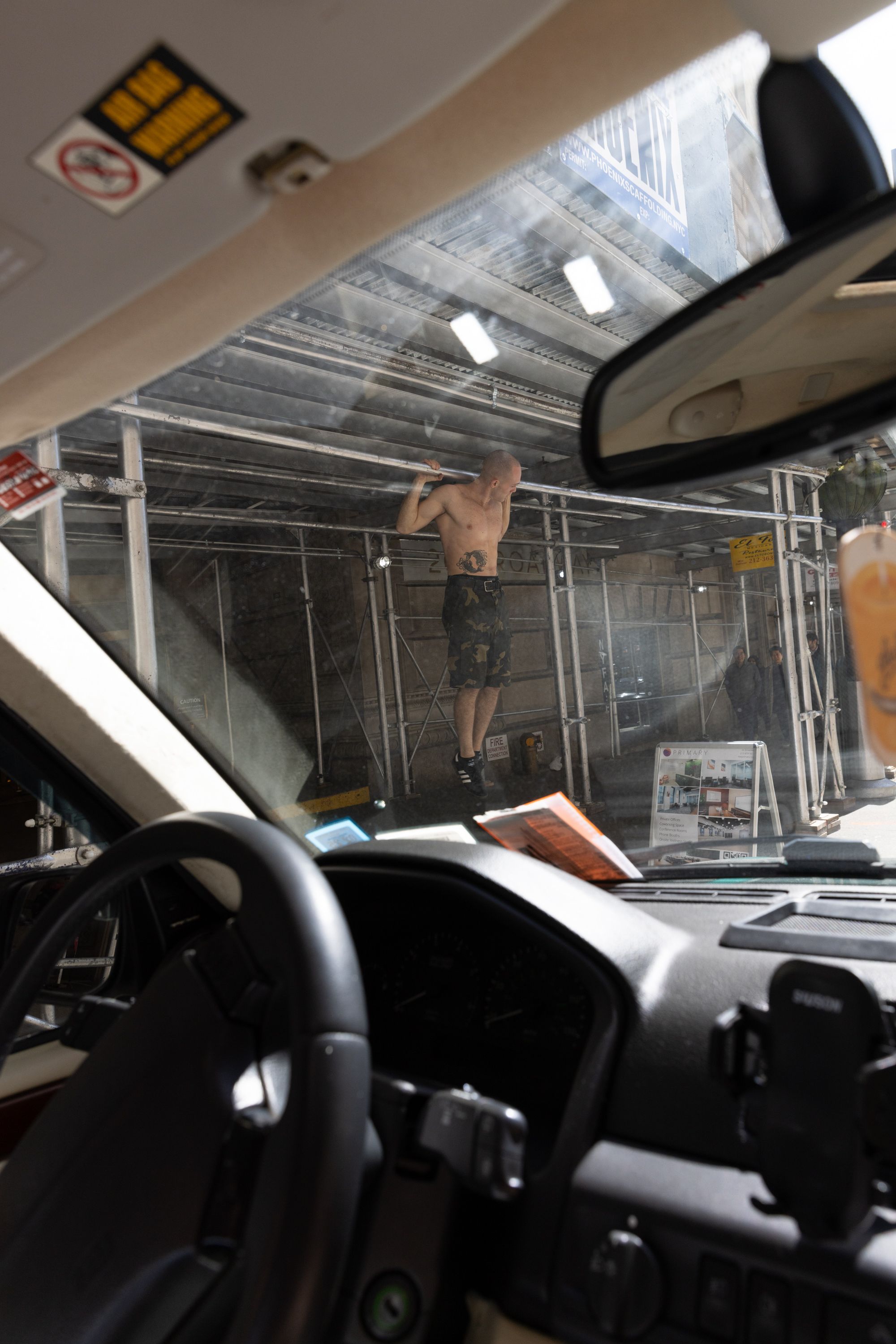
Photography by Nick Sethi for PIN–UP 36.